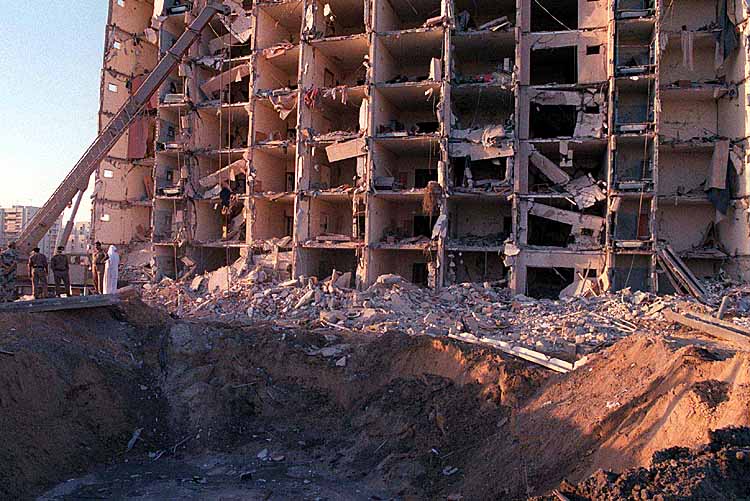Captured: Mastermind behind the 1996 Khobar Towers attack
Editor's Note: This post originally appeared on Markaz.

Published by The Lawfare Institute
in Cooperation With

Editor's Note: This post originally appeared on Markaz.
Ahmed al-Mughassil, a Saudi Shiite who masterminded the June 25, 1996, attack on an American military base in Khobar, Saudi Arabia, has been captured by Saudi intelligence. According to Saudi and Pakistani press accounts, al-Mughassil was found in Beirut and has been transferred to the kingdom. Nineteen United States Air Force personnel were killed at Khobar and 372 wounded by the attack. The timing of the capture will raise questions about how it might impact the Iran nuclear deal debate.
The press accounts do not provide details on when and how the Saudis apprehended al-Mughassil, and the Saudi government has provided no comment or confirmation as yet. Some accounts say al-Mughassil was caught just two weeks ago in Beirut. Saudi authorities have been unwilling to comment publicly on the Khobar attack since it occurred in 1996, but they privately have long pointed to al-Mughassil and his Iranian handlers as the perpetrators.
Born in 1967 in Qatif in Saudi Arabia's Eastern province, al-Mughassil joined Saudi Hezbollah and became its military commander. Saudi Hezbollah, also called Hezbollah al-Hejaz, was close to Lebanon's Hezbollah and the Iranian Revolutionary Guard Corps (IRGC) in the 1990s. Saudi Hezbollah operatives were trained in camps in Lebanon and Iran by Hezbollah and IRGC experts.
In the 1990s, al-Mughassil operated from the Sayyida Zainab mosque in Damascus, Syria. As a Shiite pilgrimage site, the mosque is a stronghold of the Iranian presence in Syria. Beginning in 1994, al-Mughassil began surveilling the Khobar Towers facility and the Dhahran air base nearby. It was then the main U.S. Air Force base for ‘no fly zone’ operations over Iraq. According to a 2001 Department of Justice (DOJ) indictment, al-Mughassil made periodic visits to Dhahran to oversee the surveillance and recruit local Saudi Shiites for the attack.
As deputy assistant secretary of defense at the time, I arrived at the Khobar bomb site a few hours after the attack. The scene was devastating. Al-Mughassil had driven a truck containing the bomb up to a protective wall near the barracks. He then remotely detonated the bomb. It was the equivalent of 20,000 pounds of TNT—larger than the bomb used by Hezbollah to blow up the U.S. Marine barracks in Beirut in 1983. In addition to the Americans killed and wounded, dozens of Saudis and South Asian guest workers were injured. Al-Mughassil allegedly fled to Iran after the attack.
The 2001 DOJ indictment indicates the bomb was built by a member of Lebanese Hezbollah. The indictment also says al-Mughassil was in close contact with Iranian officials throughout the planning and execution of the attack. In his memoirs, President Bill Clinton wrote that Iran's involvement raised "difficult and dangerous questions."
The news of al-Mughassil's apprehension will also raise questions about how the 20-year-old manhunt broke now. The timing is suspicious. Is the news intended to remind Americans about Iran's long history of involvement in terrorism, just as the Congressional debate on the Iran nuclear deal reaches its peak? The Saudis are very concerned that the deal will end Iran's isolation and strengthen its capacity for regional mischief. Riyadh has been fairly quiet about its concerns, but it is deeply engaged in a proxy war with Iran in Yemen. Even if the timing of al-Mughassil's arrest is a coincidence, the decision to leak the news is probably intended to influence the debate.
Saudi sources also say King Salman bin Abdul-Aziz Al Saud Salman, the Saudi leader, will visit Washington early next month. Al-Mughassil's arrest is certain to be a major issue for the visit and raise questions about U.S. access to his interrogation in the kingdom and possible extradition to the United States.



.jpg?sfvrsn=d5e57b75_5)
